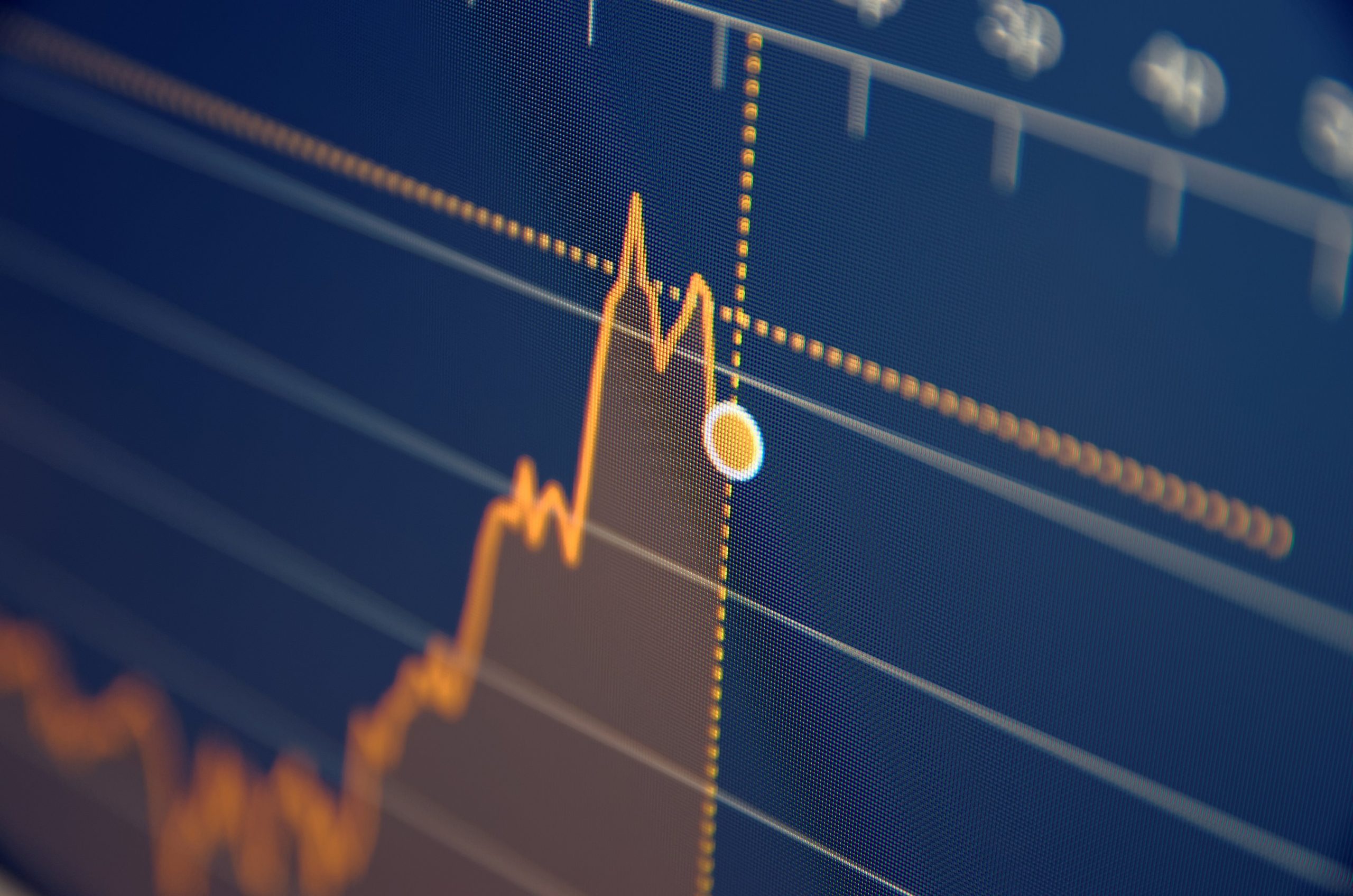by Hubert Marleau, Chief Investment Strategist, Palos Management
The Weekly Narratives of April 25, 2019:
According to data assembled by Google Search, a very large number of investors are still afraid that a recession is looming in the dark. They are so focused on blogs preaching that there are potential recession signals everywhere that they overlook evidence to the contrary.
As a matter of fact, the underlying data suggests that an imminent recession is a mathematical impossibility. The BofAML came with an astute observation when it showed that the correlation between long-minus-short rates and recessions cannot be mistaken for causation.
The Fed does not sleep-walk over a cliff and it’s not stupid. Amazingly, a lot of professional investors think that they are a lot smarter than the Fed. It’s crazy.
As a rule the Fed does not want recessions unless it’s absolutely necessary. The bank adds that the Fed is
“not an innocent bystander when the curve inverts: it can prevent or quickly undo inversions that it does not wish to have.”
It’s ridiculous to believe that the Fed is hell-bent on intentionally killing the economy just for fun.
The Fed and its regional allies wrote more research papers on curve-inversions than anyone else and they understand that yield curves are dangerous when the policy rate is way above the neutral rate or interest rates are much higher than the rate of inflation. They also know that depressed term premiums can make yield curve signals less reliable.
Also there is a difference when a yield curve inverts because long rates are declining than when short rates are rising. The former is because inflation is falling and the latter is because inflation is rising. And we are not having rising inflation at this time.
What is particularly interesting is that institutional investors were the ones who were ill-informed and unlucky—missing the Q1 bull run. This time was indeed different. The “dumb money” was not with “Main Street” but with “Wall Street”.
80Missing a round trip is a costly sin of omission. This time it took 80 trading sessions to break even from the depths of Christmas Eve. There have been other times where the S&P 500 has fallen around 20% and swiftly recovered—-1990, 1998, and 2011. Ben Carlson ran some numbers on this phenomenon.In 1990 it took 86 trading sessions to break even from the bottom. In 1998, it took 35 trading days and it took 92 in 2011. Citigroup Strategist Tobias Levkovich identified four main arguments which bears are making and knocked each one down.
1) Economic expansions that are long in the tooth are vulnerable to a recession. Business cycles don’t die of old age. They are murdered by some exogenous shock.
2) Profit margins shrink as a result of higher wages. History shows that wages have not been the cause of margin declines. As a rule rising employee expenses are either pushed to consumers, fought with job cuts or replaced with productivity enhancement. The main cause of margin contraction results from sales reductions, fixed overhead cost absorption or an actual recession.
3) The so-called retail flows are no longer the driving force. The increase in share buy-backs by corporations is larger than the retail reduction in share-purchases.
4) Stocks are expensive. P/E multiples are lousy timing metrics. If history is any guide, low inflation allows P/E ratios to be in the 18x range. Levkovich wrote: “ Our normalized earning yield gap analysis still augurs well for S&P 500 gains in the next twelve months with 88% probability.”
In spite of the dim prospective economic view of the IMF and warnings from the EC and the WTO, the global economy is not entering nor heading toward a discouraging slowdown. Fiscal measures in China plus an even keel monetary stance in the US are having a positive impact on global economic activity.
They remedied the temporary slowdown of Q/4. Together, the US and China account for about 50% of global growth. Consequently, these two economic giants can provide a reliable indication about what is going on globally.
Firstly, the Chinese economy grew at a faster than expected rate during Q1, expanding 6.4%. There are signs that policy-led stabilization programs are taking effect. On the heels of March’s inspiring PMIs and surprisingly strong export and credit growth, industrial production surged in March, rising 8.5% year-over-year compared to just 5.3% in the January-February period. Year-to-date fixed asset investment registered a 6.3% increase and retail sales annual growth rosed to 8.7%.
For the first time in months, expectations and sentiment among investors, businesses and consumers have positively grown in the last two months. China’s central bank manifested its confidence that economic growth will be sufficiently resilient as a result of last month’s tax-cut package that it will not need to resort to flood-like monetary stimulus measures.
Secondly, the prospect for the US economy is also improving from what it was a few months ago. A quick succession of positive data like job creation, rising retail sales, lower trade deficit and expanding manufacturing and non-manufacturing sectors are changing estimates for GDP growth.
The high frequency models of the Atlanta Fed and the Moody Analytics now have a 2.8% growth factor for Q1. The estimates were as low as 1.0% earlier in the quarter. On balance the nascent “cyclical reflation” story is gingerly taking root.
Surveys indicate that investors feel better about global growth and less fearful of a nearby recession. Recent data is telling us that the expansion is not collapsing but slowing into a story of moderate growth.
Although a cooling period is probable, I’m willing to take the aforementioned “Levkovich odds” that the direction of the market is up and it may be a long way from ending. Why? The chances are pretty good that the Fed has successfully achieve its goal of engineering a “soft Landing”.
We’ve heard it all—the yield curve, the trade war, monetary policy and even dodgy corporate debt were deemed the possible causes of the next recession. A hated bull market is music to my ears. Yardeni Research has a contrary indicator named the the Bull/Bear Ratio compiled by Investor Intelligence.
History shows that the ratio works well as a bullish contrary indicator when the ratio is way below 1.0–and most everyone is bearish and as a bearish contrary indicator when it's far above 3.0–and most everyone is bullish. Currently, the ratio is 2.7, which is neither too hot nor too cold--it’s in the mid-zone. Another good and reliable indicator is the Boom-Bust Barometer (BBB).
It is simply the the CRB raw industrial spot price divided by the weekly initial job claims. It works as a simple measure of the fundamental that drives amend confirms the stock market trends. Given that the ratio is sensitive to global economic activity and labour conditions in the U.S., it is therefore highly correlated with the S&P 500 forward earnings.
Since there has been no divergence between the BBB and the S&P up to now, it suggests that the economy is performing between a cool and warm space—not between a hot or cold place. There you have it, the index of leading indicators and coincident indicators produced by the Conference Board is confirming that growth is steady but slowing.
What concerns me the most about permanent bears is that they tend to change their narrative before getting actual facts to fit their mood. In early 2018, bears were warning that the economy was overheating. In late 2018, they came up with looming recession. Now, they are talking about a possible spike in inflation.
I agree that investors should pay attention to inflation—-it’s a killer. But until it happens, one should stay calm. Listening to bear makes us prudent and cautious and that is OK; but it's a terrible way to make money. In the fullness of time, a perma-bear is a loser and a permanent-bull is a winner. If one is afraid of the worse, the cost of options is inexpensive for tactical downside hedging.
The Outlook for U.S. Monetary Policy as of April 25, 2019: The Palos Monetary Policy Index, which is the product of inflation, employment and growth, rose to 230 from 188 in the last two weeks. The inflationary content of the misery index which is the addition of the unemployment rate (5.8%) and inflation rate (1.9%) also ticked up to 25%.
Moreover, the commodity rule which is the CRB/DXY ratio has been trending upward for several months. The index is now 1.92x compared to 1.74x at the end of December. These readings are suggesting that the policy rate should be a notch higher than it is at 2.38%. Yet, Fed is less likely to do what it should to do and stay put for a while longer.
If anything, it looks as the Fed is ready to preempt the next recession. In this respect, it is likely that the value of dollar will tend to decline, the price of commodities tend to rise and risky assets will tend to strengthen. The CanadIan Dollar as of April 25, 2019;
If it had not been for the sudden increase in energy prices and the overextended status of household debt, the Bank of Canada would have raised the policy rate on Wednesday last. As a matter of fact, the Palos Monetary Policy Index, the lower official estimate of potential growth and the reduction in the 2019 growth expectations to 1.2% from 1.7%, strongly suggested that the the central bank should have interfered with a rate cut.
Instead, the Bank of Canada signaled that rates are not going up anytime soon and decided to lower the neutral rate to 2.25%. The governing council probably wants to prevent another borrowing binge from happening and carefully try to help Canadians to gently deleverage.
Interestingly, the Loonie has been an outlier. All the other petro-currencies ( the Norwegian krone, the Russian rouble, the Mexican Pesos) have fared well in the foreign exchange markets in the past month. As a matter of fact, the swap trading is betting that the chance of a rate cut in 2019 is better than 50%.
Don’t be surprised, a bigger story is the extent to which unexpectedly lackluster inflation data in Australia is effectively cementing the case for the RBA rate cut on May 7. On Thursday morning, the Loonie was trading lower at 74.25 US cents. It technically looks weak with key support around 73.30 US cents with key resistance at 75.69 US cents.
The U.S. Outlook for Inflation as of April 25, 2019
The headline inflation rate will significantly rise in Q2 because energy prices rose rapidly. The CPI could rise by as much as 3.6%, according the the Inflation Now Casting Model of the Cleveland Fed. However, Core PCE, the preferred measure of the Fed, is expected to increase only at the annual rate of 1.6% in Q2.
The U.S. Outlook for Economic Growth as of April 25, 2019
The Atlanta Fed High Frequency Economic Model is estimating that GDP grew at the annual rate of 2.8% in Q1.
Moody’s economic tracker is betting that GDP growth grew at the annual rate of 2.7% in Q1. The Recession Risks as of April 25, 2019 Goldman Sachs is suggesting that the recession risk is now only 10%. compared to 25% a few weeks ago.
The Global Energy Complex as of April 28, 2019
WTI crude reached $66.25 a barrel on Thursday morning for the first time in six months as the U.S. decision to remove Iran oil sanctions waivers combined with lower Russian flows.
Moreover, the Saudis have manifested reluctance to replace the one million barrels of Iranian oil that may be of the global market, stating that it does not have the spare capacity. Technically, the outlook for the price of oil price is neutral.
Yet, it have stage an important recovery for $40 last December. There appears to be some resistance around $68—that is $10 above the marginal cost of oil which include exploration and development costs—and some key support at $62.
The Outlook for the S&P 500 as of April 25, 2019:
The stock market valuations are getting rich but the trend is up. However, there is resistance around 2940 but key support near 2813. Earnings are doing better than expected, including many surprises. Of the 132 companies in the S&P 500 that have reported through Wednesday, 79% exceeded industry analysts’ earnings estimates. Collectively, the reporters have average a y/y increased of 4.8%—the forecast was negative.
- The ERP (3.15%)/ CNN F&G (71) ratio is 44, steady but neutral
- The VIX (13.14)/CNN F&G (71 ratio is 19, declining, neutral-to-mildly bearish.
- The Rule of 20 which is the addition of the 12-month Forward P/E (17.6) plus the five-year
- inflation expectation (1.9%)is 19.5--that is a bit below 20 and therefore mildly bullish.
- The S&P 500 (2900)/ Gold (1276) ratio is 2.3 times and rising--a usually good indication of bullish sentiment. The market is going up because inflation and geopolitical fears are receding.
- The yield curve 10’s ( 2.52%) minus 3’s ( 2.42%) /VIX is steady and therefore neutral.
Copyright © Palos Management
photo credit: Adobe Stock














